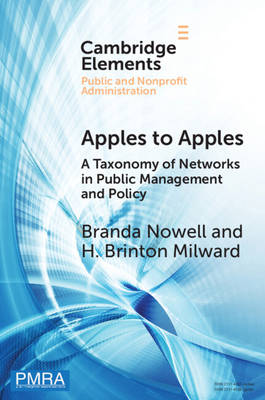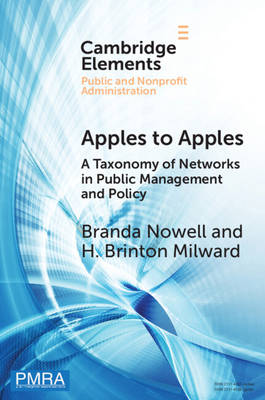
- Afhalen na 1 uur in een winkel met voorraad
- Gratis thuislevering in België vanaf € 30
- Ruim aanbod met 7 miljoen producten
- Afhalen na 1 uur in een winkel met voorraad
- Gratis thuislevering in België vanaf € 30
- Ruim aanbod met 7 miljoen producten
Zoeken
Apples to Apples
A Taxonomy of Networks in Public Management and Policy
Branda Nowell, H Brinton Milward
€ 31,95
+ 63 punten
Omschrijving
Interest in networks in the fields of public management and policy has grown to encompass a wide array of phenomena. However, we lack a stable and empirically verifiable taxonomy for delineating one network class from another. The authors propose all networks and multi-organizational collaborative entities can be sorted into three taxonomic classes: structural-oriented, system-oriented, and purpose-oriented. This Element reviews the intellectual disciplinary histories that have informed our understanding of each of the three classes of networks. It then offers a taxonomic description of each of the three classes of networks. Finally, it provides a field guide for empirically classifying networks. The authors hope is the taxonomy presented will serve as a tool to allow the field to quicken the pace of learning both within and across classes. When we are able to compare apples to apples and avoid inadvertent comparison of apples and oranges, we all get smarter faster.
Specificaties
Betrokkenen
- Auteur(s):
- Uitgeverij:
Inhoud
- Aantal bladzijden:
- 75
- Taal:
- Engels
- Reeks:
Eigenschappen
- Productcode (EAN):
- 9781108987462
- Verschijningsdatum:
- 30/06/2022
- Uitvoering:
- Paperback
- Formaat:
- Trade paperback (VS)
- Afmetingen:
- 152 mm x 229 mm
- Gewicht:
- 145 g

Alleen bij Standaard Boekhandel
+ 63 punten op je klantenkaart van Standaard Boekhandel
Beoordelingen
We publiceren alleen reviews die voldoen aan de voorwaarden voor reviews. Bekijk onze voorwaarden voor reviews.











